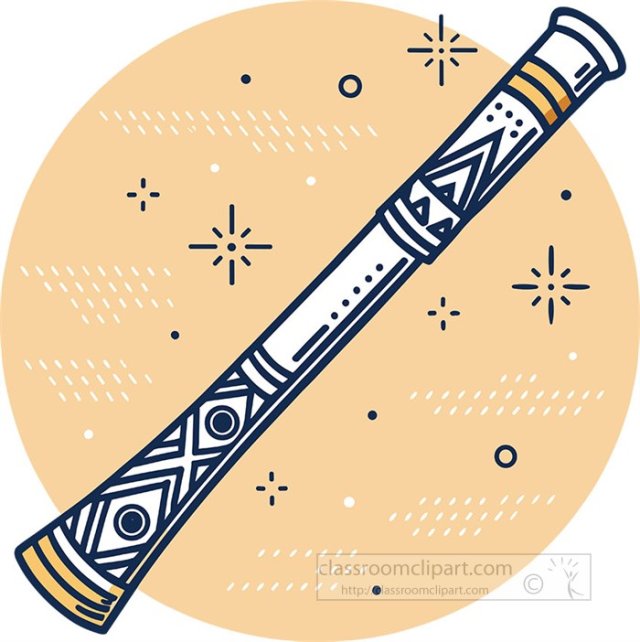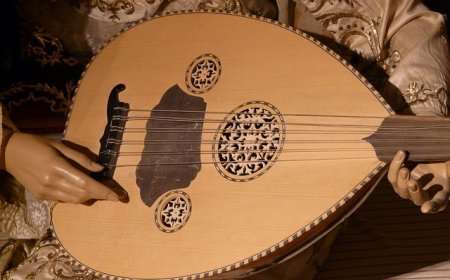Didgeridoo Facts for Students Australia’s Oldest Wind Instrument
Explore the didgeridoo, an ancient Aboriginal Australian instrument. Learn how it works, its history, cultural meaning, how to play it, and hear fun facts.

🎼 All About the Didgeridoo
🥇 Introduction
The didgeridoo is a long wooden wind instrument created and played by the Aboriginal peoples of northern Australia. It is believed to be over 1,000 years old and is one of the oldest instruments still played today. Known for its low, rumbling sound, the didgeridoo is used in ceremonies, storytelling, and connection to the land. Its sound is made by vibrating the lips, and players often use a technique called circular breathing to keep the music going without stopping.
🎶 What Is a Didgeridoo?
The didgeridoo is a natural wooden wind instrument made from a hollow tree branch, usually eucalyptus, that has been hollowed out by termites. It can be 3 to 10 feet long, and the longer the tube, the deeper the sound.
The player holds the didgeridoo at one end, blows into it with vibrating lips, and shapes the sound using their breath, voice, and mouth movements. The result is a deep, droning tone that can be decorated with rhythmic patterns, animal sounds, or voice effects.
The didgeridoo is sometimes called a "drone pipe," and each one is unique, depending on its size, shape, and the tree it came from.
🧩 Parts of the Didgeridoo
The didgeridoo is a simple instrument, but each part plays an important role:
-
Tube (Body) - A long, hollow wooden cylinder, usually made from termite-hollowed eucalyptus
-
Bell End - The wider, flared end of the tube, which helps project the sound
-
Mouthpiece - The end the player blows into; often shaped with beeswax for comfort
-
Inside Bore - The inner tunnel of the didgeridoo, which affects the pitch and tone
-
Decorations - Traditional didgeridoos are often painted with Aboriginal art and symbols
Some modern didgeridoos are made from bamboo, PVC pipes, or even fiberglass, but traditional ones are still preferred in cultural contexts.
⚙️ How Does the Didgeridoo Work?
The sound of the didgeridoo comes from buzzing the lips, like blowing a raspberry into the mouthpiece. This vibration moves through the hollow tube and creates a drone-a steady, low sound.
Players use breath control, tongue movements, and vocal sounds to add rhythms and textures. Some even imitate animal calls, such as kangaroos, dingoes, or birds.
One special skill in didgeridoo playing is circular breathing-a technique where players breathe in through their nose while pushing air out of their mouth using their cheeks. This lets them play without stopping the sound.
📜 History of the Didgeridoo
The didgeridoo has been played by Aboriginal Australians for at least 1,000 years, especially in the Northern Territory. It is closely tied to ceremony, storytelling, and the Dreamtime-the Aboriginal understanding of creation and the spirit world.
Traditionally, the didgeridoo was played by men, often alongside clapsticks and singing. It was used to accompany dances, tell sacred stories, and connect with nature and ancestors.
Though it was once limited to Indigenous communities, today the didgeridoo is played around the world in:
-
World music and fusion bands
-
Meditation and sound therapy
-
Education and cultural events
🥁 Famous Didgeridoo Players
-
David Hudson - An Aboriginal musician who has performed didgeridoo worldwide
-
William Barton - A leading classical and fusion didgeridoo artist from Australia
-
Djalu Gurruwiwi - A Yolŋu elder and traditional master of the didgeridoo
-
Mark Atkins - Known for mixing blues, rock, and didgeridoo playing
-
Xavier Rudd - A singer-songwriter who incorporates didgeridoo into modern folk music
-
Jeremy Donovan - Cultural educator and artist using didgeridoo for awareness and healing
🎶 Learning to Play the Didgeridoo
The didgeridoo is both simple and challenging. To get started, beginners learn to:
-
Buzz their lips gently into the mouthpiece
-
Hold a steady drone sound for several seconds
-
Use the tongue, voice, and breath to make rhythms and effects
-
Practice circular breathing, which can take weeks or months to master
-
Learn traditional playing styles and rhythms
Students often start on plastic or bamboo practice didgeridoos before moving to real wooden ones.
😄 Fun Facts About the Didgeridoo
-
It's believed to be over 1,000 years old-one of the oldest instruments still in use!
-
Traditional didgeridoos are hollowed out by termites, not carved by hand.
-
Circular breathing allows players to keep the sound going without stopping.
-
Some didgeridoos are over 8 feet long, making very deep sounds.
-
Didgeridoos can be used to imitate animals like birds, kangaroos, and emus.
-
The name "didgeridoo" is not Aboriginal-it may come from the sound it makes.
-
Modern musicians use the didgeridoo in hip-hop, jazz, electronic, and rock music.
👧 Kid-Friendly Summary
The didgeridoo is a long wooden instrument from Australia. You play it by buzzing your lips into one end, and it makes a deep, low sound. Aboriginal people have played it for hundreds of years in dances and ceremonies. You can even learn to play without stopping for breath!
📚 Vocabulary Words
Didgeridoo – A long wooden wind instrument from Aboriginal Australia
Drone – A steady, low musical note
Buzzing – Making a vibration with the lips to start the sound
Circular Breathing – A way to keep blowing while breathing in through the nose
Mouthpiece – The end where you place your lips to blow air
Aboriginal – The first people of Australia
Dreamtime – Aboriginal stories and beliefs about creation and the spirit world
Clapsticks – Wooden sticks used to keep rhythm in traditional music
❓ Interactive Quiz (8 Questions)
1. Where did the didgeridoo come from?
A. China
B. South America
C. Aboriginal Australia
D. Africa
2. What kind of instrument is the didgeridoo?
A. String
B. Wind
C. Percussion
D. Keyboard
3. What is the sound of the didgeridoo called?
A. Buzz
B. Tune
C. Drone
D. Pulse
4. How is a traditional didgeridoo made hollow?
A. Drilled by hand
B. Carved with knives
C. Burned with fire
D. Hollowed out by termites
5. What special skill lets didgeridoo players breathe and play at the same time?
A. Fast breathing
B. Echo sound
C. Circular breathing
D. Backward blowing
6. What material is the mouthpiece often made from?
A. Plastic
B. Metal
C. Beeswax
D. Clay
7. Which of these sounds can the didgeridoo imitate?
A. Train horns
B. Kangaroos and birds
C. Sirens
D. Waterfalls
8. What kind of music is the didgeridoo used in today?
A. Only traditional music
B. Pop and rock
C. Meditation and fusion
D. All of the above





















































